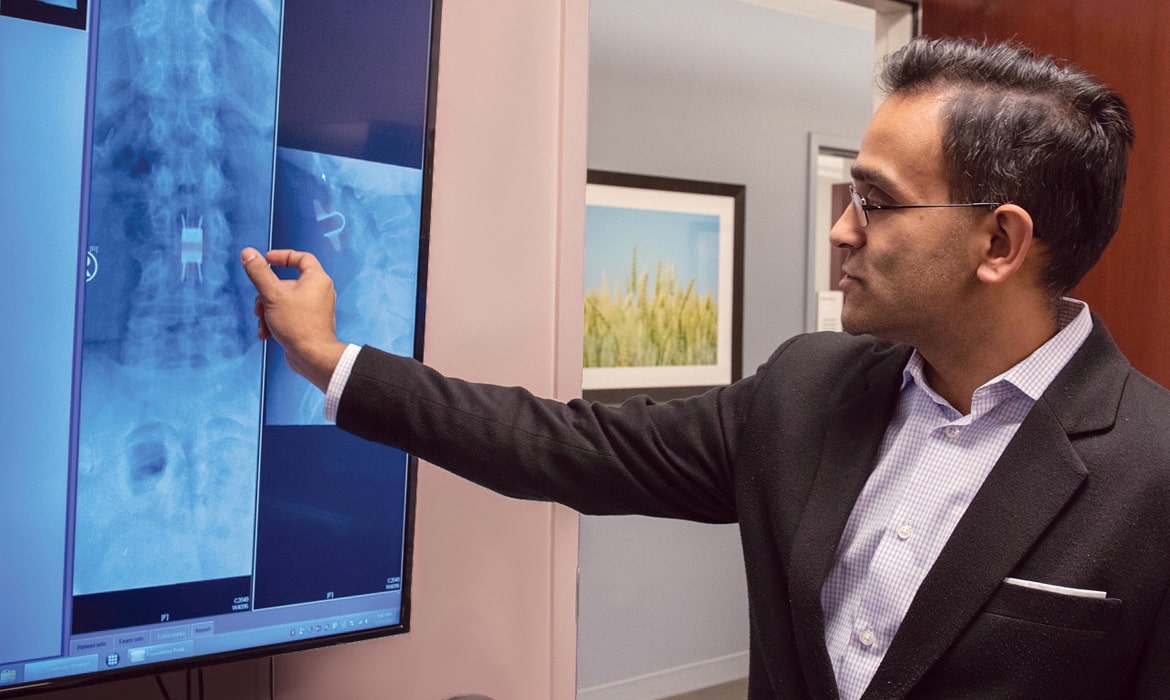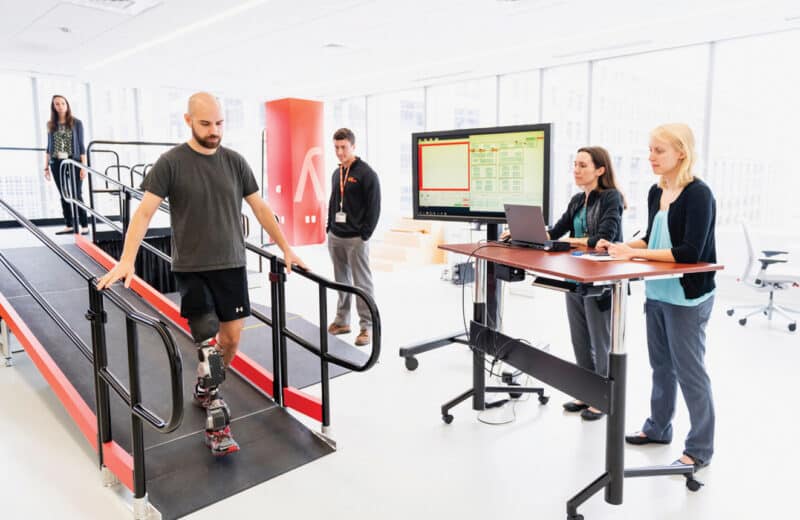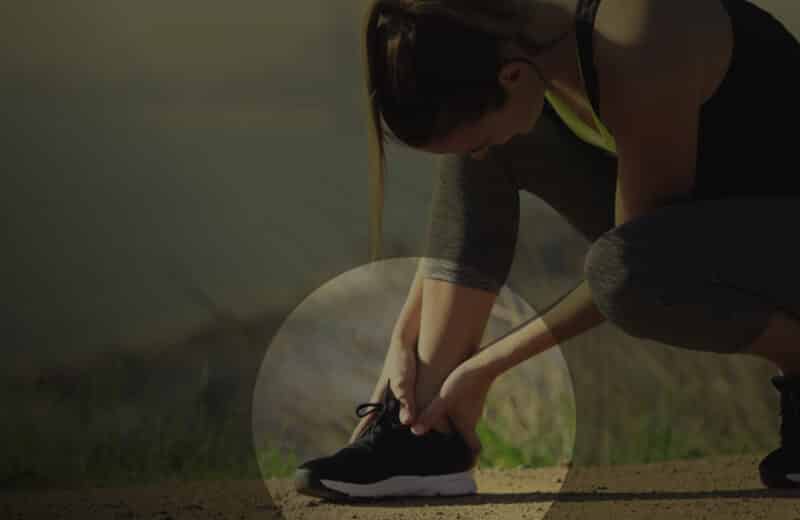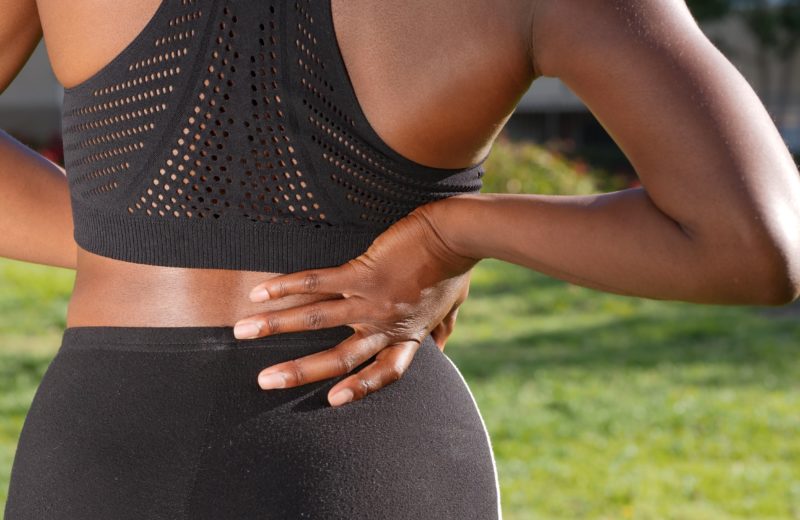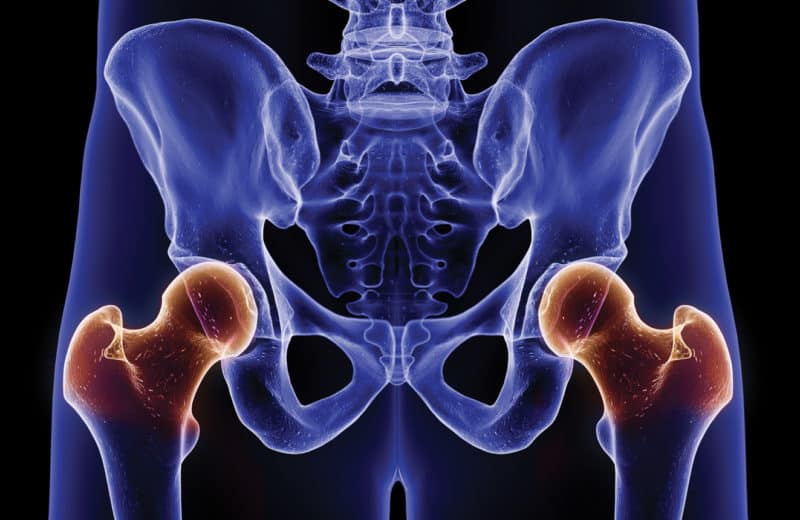Minimally invasive options relieve back and leg pain
On a late autumn day, Joe Harsa is busy in his kitchen, dicing beef and chopping veggies that he’ll throw into a pot for a homemade stew. “It takes me about two hours to cut everything up, and I’ve stood the whole time,” Harsa says. “In the past, I would have sat down to do this.”
At age 81, the Plainfield resident is enjoying a new lease on life after undergoing a relatively new minimally invasive procedure to relieve his spinal stenosis, a narrowing of spaces within the spine that can put pressure on the nerves and cause pain.
Just a few months earlier, Harsa was unable to stand for long periods of time. Hobbled by back pain, he walked with his head down and his back curved. He couldn’t turn his head from left to right. “My back was killing me,” he says. “I’d been doing physical therapy, but it didn’t work.”
Harsa was referred to John Gashkoff, MD, an interventional pain management specialist at DuPage Medical Group’s Spine Center.
“He asked me if I felt better when I leaned over and grabbed a grocery cart, and I said yes. He asked if I felt better when sitting, and I said yes.” These are typical responses from patients with spinal stenosis. When an MRI confirmed his diagnosis, Gashkoff asked Harsa if he’d be interested in a procedure that implants a small titanium device in the spine to relieve the pain.
Successful surgery
In a 45-minute procedure, Gashkoff made a small incision and placed the Vertiflex Superion Indirect Decompression System between the affected vertebrae to relieve pressure on the nerves. “It keeps the vertebrae in a more flexed position to open up the spinal canal,” Gashkoff explains. “Mr. Harsa had been told he wasn’t a great candidate for traditional surgery because he had too many other medical issues, so we offered this procedure and almost immediately his pain went away.”
The procedure was performed in an ambulatory surgery center, and Harsa was discharged home within two hours after surgery.
Post-surgery, Harsa has traveled to Alaska with his wife, and the two enjoy going to local restaurants and theater. He regularly goes around town collecting material for the humor column he writes for a local magazine.
Harsa is thrilled. “I’m enjoying life more. For a guy who’s 81 years old, it’s wonderful.”
Types of stenosis
Spinal stenosis is a narrowing of the spinal canal, most commonly in the low back (lumbar stenosis) and less commonly in the neck (cervical stenosis). It’s most often due to general wear and tear on the joints, which results in arthritic conditions, thickening of ligaments and/or bulging disks, all of which put pressure on the spinal cord or nerves.
The pressure of lumbar stenosis can cause symptoms such as back pain, sciatica (shooting pain in the legs), tingling or numbness in the legs or buttocks, and weakness or heaviness in the legs.
Cervical stenosis differs slightly, in that it can affect balance and walking, as well as cause neck and arm pain, numbness and clumsiness, and weakness in hands. Typically, therapy and medications don’t work very well for cervical stenosis, and minimally invasive surgical treatments are not as common.
A common condition
Almost all of us are affected by some degree of spinal stenosis as we age, though many times we don’t know why some people have pain from stenosis while others don’t, says Alpesh A. Patel, MD, professor of orthopedic surgery and co-director of the Northwestern Spine Center at Northwestern Memorial Hospital.
“In general, it’s a condition that becomes more common as we get older; it’s more common in women than in men, and it runs strongly within families,” Patel says. “It doesn’t mean you’re destined to have a problem because mom or dad did, but it’s something to keep in mind and to be aware of early symptoms.”
Many patients can be treated with anti-inflammatories and physical therapy, especially when the condition is treated early and for those with relatively mild symptoms. If those treatments don’t work, doctors can offer epidural steroid injections.
These injections may or may not work, and then, as the stenosis progresses, surgical procedures come into play.
Traditional surgeries for spinal stenosis, according to the American Academy of Orthopaedic Surgeons, are decompressive lumbar laminectomy and, at times, spinal fusion. Traditional laminectomy involves making a large incision in the lower back to remove bone, bone spurs and ligaments that are compressing the nerves. If there’s instability in the spine, some people may also require spinal fusion, a procedure involving the insertion of rods and screws to stabilize the spine.
Minimally invasive options
Minimally invasive procedures and devices, like Vertiflex and coflex, are designed to avoid these traditional surgeries.
Northwestern Medicine uses the coflex Interlaminar Stabilization device, a titanium implant that’s inserted in a minimally invasive procedure. The C-shaped device provides stability in the lower back while also allowing space for nerves to move freely. This proven surgery may be a good alternative to spinal fusion surgery in some people with spinal stenosis, Patel says. “The decision about coflex or other minimally invasive procedures is one that I make with each patient one-on-one,” he explains.
NorthShore University HealthSystem offers minimally invasive surgical options for spinal stenosis, utilizing small metal tubes in spinal surgery to keep the muscle out of the way, rather than cut into it, leading to less pain and quicker recovery times. The entire surgery can be performed through these small corridors.
“We try to focus on the least invasive option that allows for the quickest recovery,” explains Shakeel Chowdhry, MD, a neurosurgeon at NorthShore. “And if there is underlying instability, we can fuse and instrument through the same tubes. The patient is up and walking the same day.”
For Chicago-area spine physicians, the new procedures are exciting alternatives, especially for patients who couldn’t or wouldn’t undergo more invasive surgeries.
“Vertiflex is a major advance in the treatment of lower back pain due to spinal stenosis, and it’s successful in over 80 percent of the patients,”says John V. Prunskis, MD, CEO/medical director of the Illinois Pain Institute and The Regenerative Stem Cell Institute.
“I hear from patients, ‘I’m walking again, and I’m more physically active.’ They’re enjoying life and traveling again,”Prunskis says. “They didn’t want laminectomy or were too sick for it, so this gives them a whole new lease on life.”

